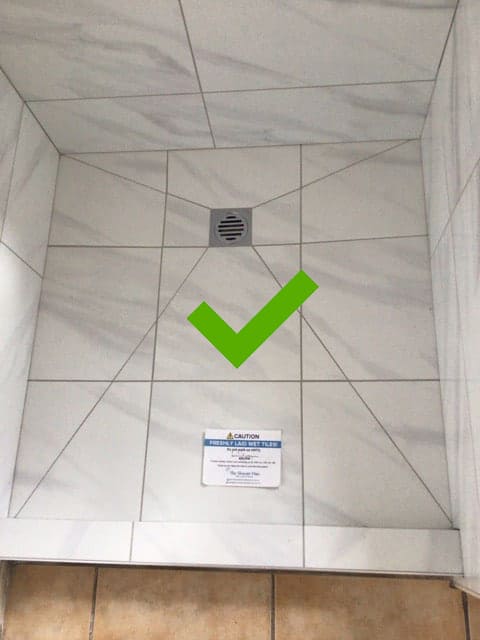They are making several great observations related to How to Repair and Prevent Bathroom Water Damage as a whole in the content followed below.

The restroom is very vulnerable for damp buildup and prospective water damages as a result of the frequent use of water in it. This post uses straightforward evaluation methods to aid detecting water damage risks.
The regular use water in the bathroom makes it incredibly prone for damp build-up and also potential water damage. By examining it on a regular basis, you can reduce water relevant damages.
The adhering to set of inspections is simple to carry out and also ought to be done once in every 3 months in order to keep your washroom in good shape and also to avoid potential water problems triggered by the bathtub, the shower, pipeline joints as well as plumbing, sinks, cabinets, and also the bathroom
Do not neglect executing these assessments and be extensive while performing them. Remember that these basic assessments can save you a great deal of cash by offering early signs for water damage
Bathtub and also Shower
The shower as well as bath tub require unique attention as well as maintenance. Examine the tiles and also replace if split. See to it that there is no missing cement between the ceramic tiles. Evaluate as well as replace cracked caulking at joints where the wall surfaces satisfy the floor or the bath tub. Blocked drains and pipelines issues will protect against the tub from drying and also might indicate significant issues below the bath tub. Talk to an expert immediately to stop structural damages. Take note of stainings or soft areas around the bath tub walls as they might indicate an interior leak.
Plumbing
Signs for water damage are tough to discover given that many pipelines are set up inside the wall surfaces.
Pay special interest to floor covering as well as wall surfaces moisture as well as stains as they may show an invisible plumbing issue. Examine wetness degrees in adjoining spaces too.
Sinks and Cabinets
Sinks as well as cupboards are revealed to moisture as well as moisture daily as well as are commonly forgotten. Evaluate regularly under the sink and also on the kitchen counter over it. Fix any drip in the trap as it might recommend drainpipe troubles. Look around the sink, slow draining pipes may indicate an obstructed drainpipe. Change sink seals if they are broken or loose.
The Bathroom
The bathroom is a susceptible water junction. Check the water lines and search for leaks around the toilet seat, in the pipe, and also under the water tank. If you spot any type of indications of dampness on the flooring around the toilet, check for leaks in the toilet rim as well as container seals.
Realize that hanging commode dish antiperspirants enhances the chances for clogs.
Water Damage Signs In The Bathroom To Avoid Cleanup
Musty smell
This is one of the easiest signs to catch because musty smells are so odorous. The damp, earthy, moldy smell should be a big red flag. The smell will develop when moisture gets trapped in surfaces, and begins to facilitate mold growth. Leaking pipes under cabinets, inside walls, and behind shower fixtures will cause moisture to stay trapped and not dry, which will lead to mold growth and spread. As soon as you notice any musty smells in your bathroom, have it checked for hidden water damage and cleanup signs.
Visible mold
If the smell isn’t there to give it away, sometimes you will actually see mold growth. Finding mold in your bathroom is a serious problem, because mold is very harmful to your health. By the time mold growth is visible, it also means that water damage has already occurred and been present for some time. The only way the mold problem can be resolved is to find the source of the moisture and get it stopped. To safely and adequately remove mold, you need to have professionals handle the remediation. Do not waste any time in getting mold problems addressed, fixed, and sanitized so that you can protect you and your family from the many respiratory symptoms caused by mold exposure.
Damaged floors
Bathroom floors should be able to withstand some exposure to water while still remaining in good condition. However, when excess exposure or water leaks occur, they will begin to damage even the most water-resistant flooring. If you notice any cracking, bubbling, staining, or warping on your bathroom floors, there is probably a water leak somewhere causing the distortion. If you notice areas of the floor have become softer, or even have a spongy feeling, there is probably damage to the subfloor. Subflooring is typically made up of plywood. When plywood is exposed to water or moisture, it will absorb it. Once it has become saturated, the weight of the excess water will cause the wood to swell and soften. Check the floors in your bathroom frequently to catch any of these sings before they lead to damaged subflooring.
Changes on walls
When water leaks behind walls, it will cause changes in the drywall. Peeling plaster, blistering paint, and soggy wallpaper are all good indicators that excess water is building up behind the wall. Water leaking behind drywall will cause it to swell and be soft to the tough. If you start to notice gaps along the trim of your walls, or where tile meets the wall, it could also be a strong indicator that there is a leak behind the wall. Any changes, distortion, or damage on the walls should be evaluated as soon as you notice it to prevent further water damage and cleanup.

As a serious reader about Preventing Water Damage in the Bathroom, I imagined sharing that excerpt was worth the trouble. Sharing is nice. You never know, you may very well be helping someone out. We cherish reading our article about How to Repair and Prevent Bathroom Water Damage.
Visit Our Site